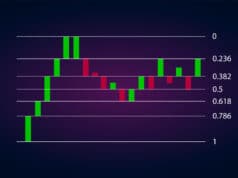Transitioning from being a part-time to a full-time forex trader is not easy. In my almost a decade in the industry, I have seen many people fail in making this transition. Therefore, in this article, we will look at the five key skills you need to master before you switch to become a full-time trader.
Patience
Patience is one of the key skills that all successful traders have mastered over the years. That’s because the market does not always work on our schedules. You have to wait.
At times, you will need to wait for a few days for a technical combination to work out before you initiate a trade. For example, if your trading strategy involves buying when the 25-day and 50-day Moving Averages make a crossover, at times, it will take a few days for this crossover to happen.
At other times, you will need patience when you have a trade running for it to make gains. This is because a trade can take longer than you expected to become profitable.
There are other ways in which you need the patience skill set before you transition to becoming a full-time trader. For example, it takes time to learn about how the forex industry works and how to initiate trades successfully.
If you are a beginner, you will need to learn about the history of forex and how the industry works. In most cases, we recommend that you spend at least a year learning about the forex industry. You should also spend this time trading in both a demo and a live account before you transition to full-time trading.
Technical indicators
Forex traders rely on chart analysis to identify trading opportunities. Indicators are one of the tools they use in chart analysis. They simply refer to the mathematical calculations to determine the entry and exit points.
These calculations are often converted into technical tools. Some of the most common tools are Moving Averages, Relative Strength Index (RSI), and the Average Directional Index. There are hundreds of these indicators in the market today.
You don’t need to learn more about these hundreds of technical indicators as you transition to a full-time trader. In fact, some of the best day traders I know only focus on a few technical indicators. While I am excellent in most of them, I only rely on Moving Averages when making trading decisions.
Therefore, we recommend that you learn about several indicators and then select the best ones available. Then master them for a few months or years before you move to become a full-time trader.
Skillset to handle losses
The most certain thing in forex trading is that losses are inevitable. Some of the best-known traders in the industry have lost money before. I am also not immune to not making losses. The only difference between most new traders and me is that my win-to-loss ratio is relatively bigger because of my experience.
Therefore, one of the most important skills you need to master before you transition from a part-time trader to a full-time professional is handling losses. In the past, we have seen many traders get into depression because they made a substantial loss. We have also seen others go back to their full-time jobs after losing money.
You can do several things to prevent sizable losses. First, you should always enter your trades after doing intensive research. Second, you should always size your trades well. This means that you should avoid opening trades with a large lot size relative to your balance as it exposes you to more risks.
Third, you should ensure that you are using low leverage. Leverage refers to the loans that your broker extends to you. While this leverage can help you make more money, it can also expose you to substantial losses. Therefore, limit your losses by using small leverage.
A good example of a trader who used leverage to make billions is Bill Hwang of Archegos Capital. Ultimately, he lost more than $20 billion within a few days when the market went against him.
Price action analysis skills
In addition to technical indicators, we recommend you mastering price action analysis. This is a type of analysis that involves looking at charts and identifying patterns. These patterns can help you to predict the direction of a currency pair. I know many full-time traders who only rely on price action analysis to predict chart movements.
There are two types of key chart patterns that you need to know about: continuation and reversal. When you spot a continuation pattern, it means that the currency pair will likely break out in the original direction of a trend. Some of these patterns are ascending and descending triangles.
On the other hand, reversal patterns usually send a signal that the price will soon change direction. These include wedges, double tops, and bottoms. Therefore, we recommend that you learn and master how to use these techniques before you transition to a full-time trader.
Fundamental analysis
The final major skill you should master as you transition to a full-time trader is how to conduct fundamental analysis. This is a type of analysis where you look at the news of the day or other economic metrics and make trading decisions accordingly.
Some of the key events to watch are political news, employment, inflation, manufacturing, and services data. We recommend that you study how these events affect currencies and some of the key strategies to use before and after they happen.
Other skills
There are other important skills you need to be aware of before you move to become a full-time trader. First, you need excellent money management skills. This is where you learn how to allocate money to trading and to your personal life. Second, you should know how to manage your losses before holding wins. Most importantly, you need quality record-keeping skills.




